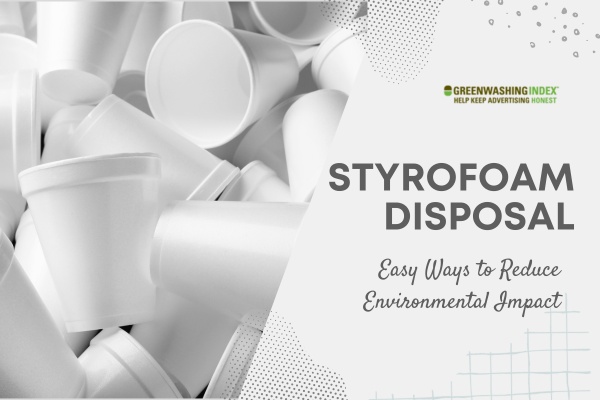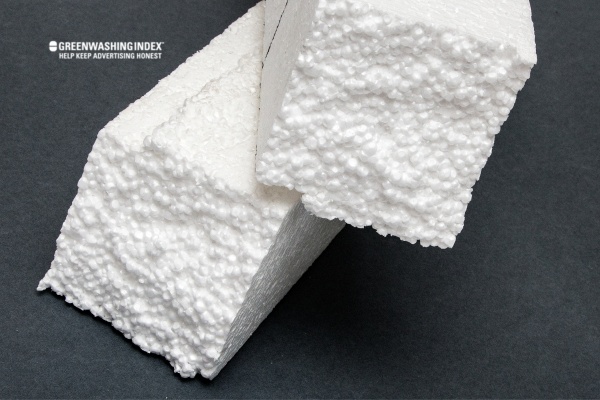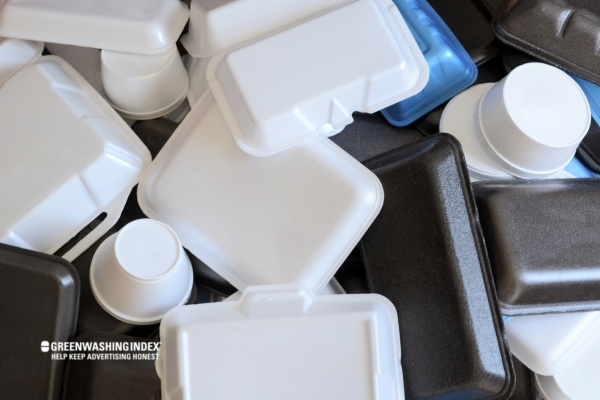

Styrofoam, commonly used for packaging and food containers, poses significant environmental challenges due to its durability and difficulty in disposal. Improper disposal can lead to long-lasting pollution, as Styrofoam can remain intact for hundreds of years.
While burning Styrofoam may seem like a quick solution, it releases harmful chemicals into the atmosphere. Instead, exploring proper recycling methods or community drop-off programs is essential. By adopting eco-friendly alternatives and responsible disposal practices, we can mitigate the negative impact of Styrofoam on our planet.
The environmental impact of Styrofoam, or expanded polystyrene (EPS), is a pressing concern due to its widespread use and long-lasting presence in ecosystems. Styrofoam is commonly found in packaging, food containers, and disposable cups, contributing significantly to global plastic pollution.
Its lightweight nature makes it easily transportable by wind and water, leading to widespread contamination of land and marine environments. The non-biodegradable properties of Styrofoam mean it can persist for hundreds of years, posing risks to wildlife and human health. Below is a detailed overview of the various aspects of Styrofoam’s environmental impact.
The environmental impact of Styrofoam is significant and multifaceted. Addressing this issue requires concerted efforts towards finding sustainable alternatives and implementing effective waste management practices.
Styrofoam, a common material used in various applications such as packaging and food containers, presents significant environmental challenges due to its non-biodegradable nature.
Exploring how to dispose of Styrofoam responsibly is crucial for reducing its impact on our planet. Below are effective methods for managing Styrofoam waste, including recycling options and creative reuse ideas.
By implementing these strategies on how to dispose of Styrofoam, individuals can significantly mitigate its environmental footprint and contribute to a more sustainable future.
Styrofoam, that white, puffy stuff a lot of our take-out food comes in or those big blocks that protect new electronics, is quite tricky to get rid of the right way. But don’t worry; I’m here to guide you through how to sort, clean, and pack your Styrofoam for disposal.

First things first: not all Styrofoam is the same, so we need to sort it out properly. Recyclable Styrofoam usually has a triangle with a number six inside it. This is the kind you can often recycle. On the other hand, if you don’t see this symbol or there’s another number there — chances are it can’t be recycled easily.
Here’s a simple step: look for the triangle symbol on each piece of your Styrofoam before deciding its next stop – recycle bin or trash can.
Before you toss your clean, recyclable Styrofoam into the bin, make sure it’s really clean. Leftover food and drink can spoil whole batches of recycling! Rinse any bits off your Styrofoam containers with water – just a quick wash will do.
Imagine this: every tiny piece of leftover on that pizza tray could mess up the recycling process! Taking an extra minute to rinse stuff off makes a huge difference.
Now, let’s talk about packing those pieces properly because space counts when it comes to recycling bins! You want to break down large pieces into smaller ones, but be gentle – don’t make more mess or send little bits flying all over.
To pack efficiently: fit smaller parts into bigger ones like nesting dolls; this way, your Styrofoam block becomes compact and ready for its journey!
And remember, folks, while these steps help with ‘Styrofoam disposal,’ finding eco-friendly alternatives is even better for our planet in the long run!
Styrofoam is a name many of us use for products made from polystyrene foam. This material is light and can keep things hot or cold, making it popular for storing food and goods. However, getting rid of Styrofoam isn’t easy. Here’s why:

First off, Styrofoam doesn’t break down naturally like some other materials. When I toss an apple core in my backyard, over time, it turns into part of the soil. But if I throw out a Styrofoam cup out there, it would still be a cup years later.
Now, here’s another issue: most recycling centers won’t take Styrofoam. Recycling involves breaking items down to make something new. With Styrofoam, that process is tough because the material is more air than plastic—about 90% air! So, the cost to transport and recycle it can be more than what the recycled product is worth.
One more challenge with putting Styrofoam in the recycling bin is that it could get mixed up with other recyclable stuff like paper or glass and contaminate those materials. That’s bad because then those items might not be recycled either.
Most people don’t know that there are different types of this foam – some have colors or food stains on them, which makes recycling even harder.
Lastly, let’s talk about what happens when we just chuck Styrofoam in the usual trash can: It ends up taking up a lot of room at landfill sites because it’s mostly air and doesn’t compact well, which could make Styrofoam waste reduction all more challenging.
Because tossing out Styrofoam isn’t great for our planet (really bad, actually), finding smart ways to handle Styrofoam disposal becomes crucial. We should think about either recycling it correctly (Styrofoam recycling) or finding uses for it around our homes (Styrofoam reuse). Better yet, consider alternatives that are kinder to Earth (eco-friendly alternatives to Styrofoam), so we have less to get rid of in the first place!
Remembering these struggles with getting rid of this material might just encourage us all to cut back on using it as much as we can (upcycling) and seek better options whenever possible.
Styrofoam is a tricky thing to get rid of in an eco-friendly way. Since it can last a very long time without breaking down, finding better ways than just throwing it away is important. Here’s how you can keep it out of the landfill.
When I think about getting rid of Styrofoam, I know throwing it in my trash bin isn’t the best choice. Sending Styrofoam to a landfill is bad for the environment because it doesn’t break down well. But there’s good news! Many communities have special drop-off programs for Styrofoam disposal. Let me share how you can take advantage of these programs.
First things first, find out if there’s a drop-off spot near you. Some places have recycling centers or collection events for Styrofoam upcycling and recycling. Usually, you can check online on your city or town’s official website or give them a call.
Once you find a place, make sure the Styrofoam is clean and free from food bits or stickers – they want it nice and pure. Then, sort it if required; sometimes, they’ll ask that different types of Styrofoam be kept separate.
Then, taking your sorted and clean Styrofoam to the drop-off point is all it takes. They’ll handle the rest! It’s a great feeling knowing you’re helping reduce Styrofoam waste instead of adding to it!
Remember that not all types of Styrofoam may be accepted—some might only take packing materials, while others accept food containers, too. Always check what’s accepted before you go!
Another cool way to deal with Styrofoam disposal that not many people know about is mail-back programs. Some companies actually let you send used Styrofoam back to them so they can recycle or reuse it themselves.
Here’s how these mailing programs work:
Look up companies that offer this kind of service – they might be manufacturers who use lots of packaging or specialized recyclers who focus on products like Eco-friendly alternatives to Styrofoam.
Contact them either via their website or over the phone—some may even list instructions online for how their program works specifically.
They’ll usually tell ya what types of Styrofoam items they take back—these could be things like foam packing blocks from shipped goods.
Some will provide shipping labels for free, while others might ask for a small fee—this helps cover their recycling costs (makes sense!).
Package up your clean, sorted-out Styrofoamin stuff according to their directions; don’t forget strong tape so everything stays put during shipping!
Mail off your package at your local post office or another shipping spot—they’ll wing its way back to the company ready for some top-notch Styrofoam recycling!
I encourage folks to always look into these mailing options since not everyone has access to nearby drop-off points – plus, it’s helping create less trash by making sure our foamy friend gets another chance at life!
Styrofoam is harmful due to its non-biodegradability, contributing significantly to landfill waste and environmental pollution, while also leaching toxic chemicals into food and water.
Foam core, typically made from polystyrene, is generally not recyclable due to its composition, although some manufacturers have developed recyclable variants.
Styrofoam, or expanded polystyrene (EPS), is technically recyclable but often not accepted in curbside programs. Specialized facilities are required for effective recycling.
Addressing the issue of Styrofoam disposal reveals significant environmental implications. It sounds like a collective responsibility to manage this material effectively, as improper disposal can lead to long-lasting pollution. While burning Styrofoam may seem like an option, it releases harmful chemicals and poses health risks.
Instead, focusing on Styrofoam recycling and exploring eco-friendly alternatives is essential. By adopting these practices, we can contribute to a cleaner planet and reduce the detrimental effects of Styrofoam waste on our environment.

Don't let aphids, slugs, and caterpillars ruin another plant. Take back control with simple, natural methods that actually work.